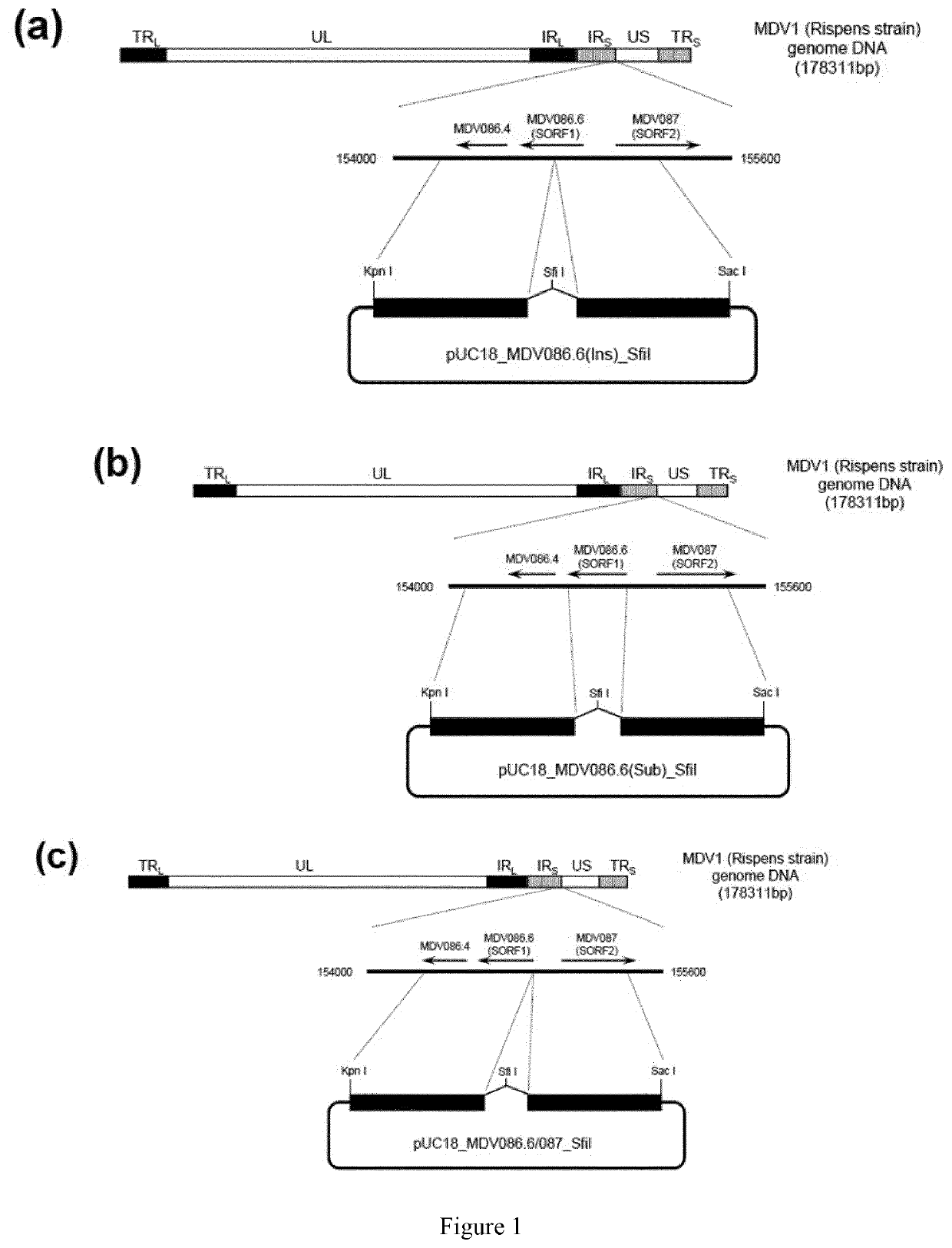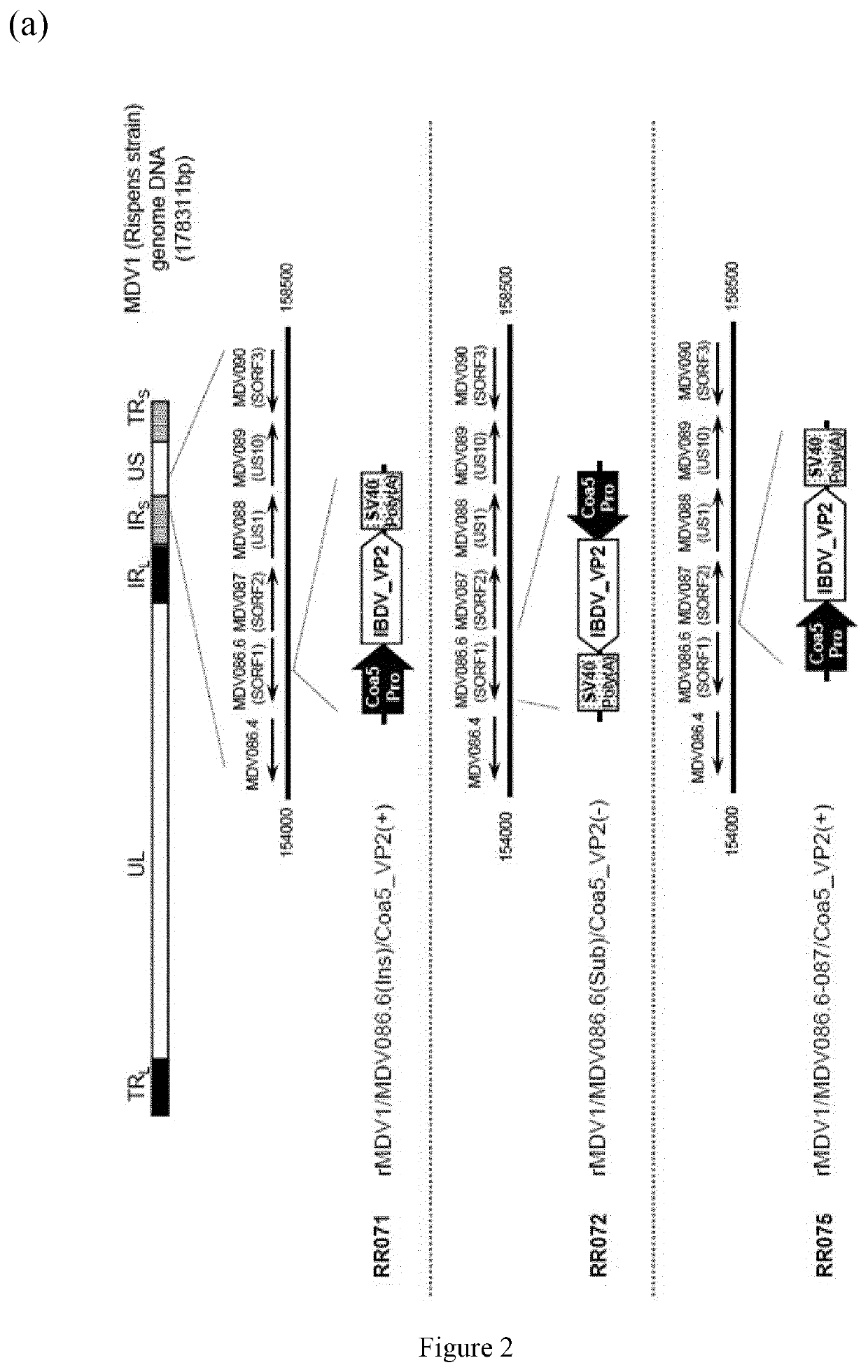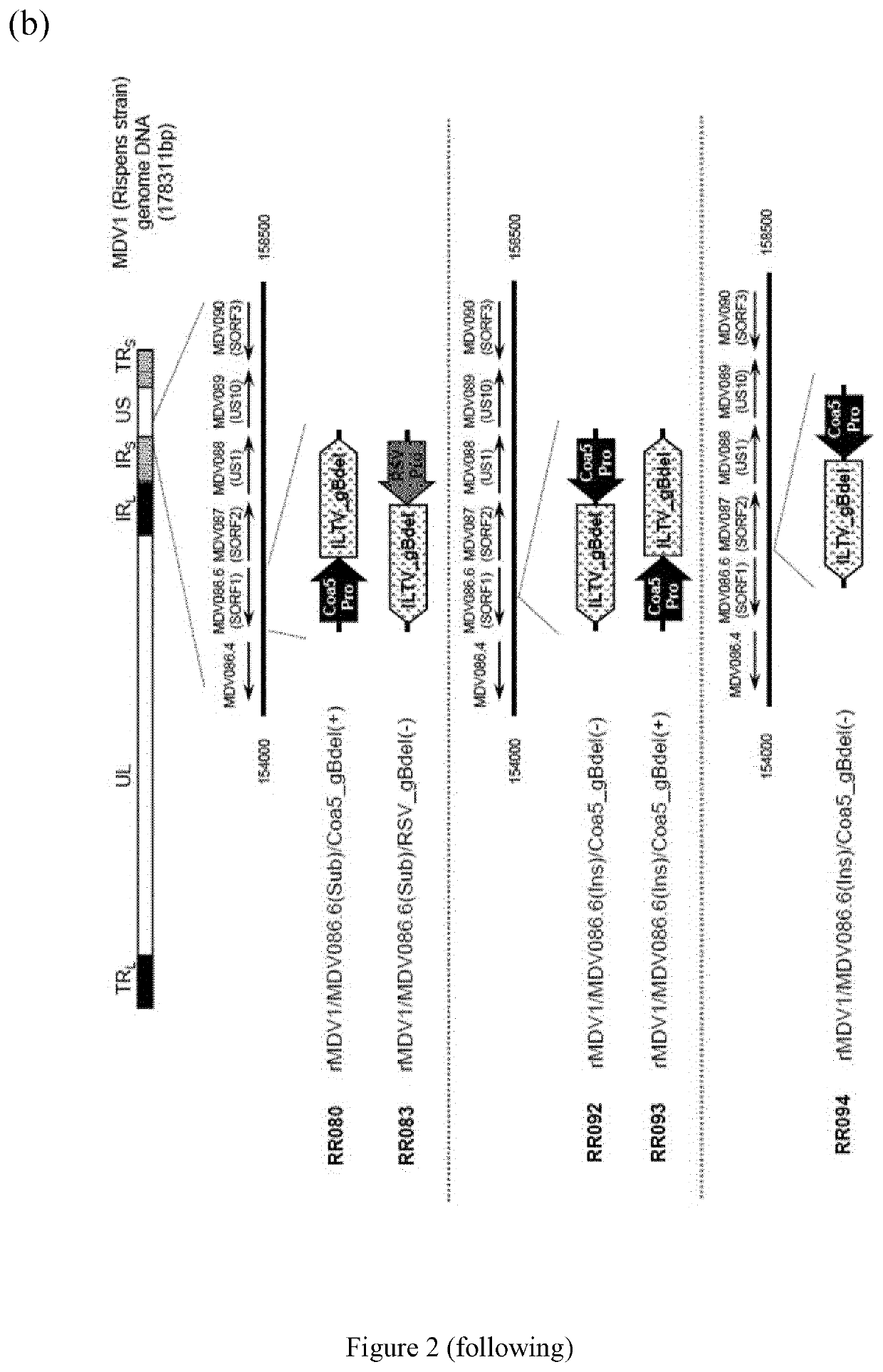Recombinant viruses and the uses thereof
a technology of recombinant viruses and encoding molecules, which is applied in the field of recombinant viruses, can solve the problems of recombinant viruses and their interference, and achieve the effects of strong immune protection, stable expression of foreign genes, and effective cloning
- Summary
- Abstract
- Description
- Claims
- Application Information
AI Technical Summary
Benefits of technology
Problems solved by technology
Method used
Image
Examples
example 1
ion of Homology Vectors
[0133]The plasmid construction was essentially performed by the standard molecular biology techniques (Molecular Cloning: A Laboratory Manual. 4th Edition, Cold Spring Harbor Laboratory, Cold Spring Harbor, N.Y., USA, 2012).
[0134]Construction of pUC18_MDV086.6(Ins)_SfiI
[0135]A 1.1-kb DNA fragment of MDV1 Rispens strain genome flanking the target locus, MDV086.6 (SORF1) gene, was cloned by PCR so that SfiI recognition site was added in the middle of MDV086.6 (SORF1) (FIG. 1(a)). Briefly, using DNA extracted from MDV1 Rispens strain (PASS+21) as a template, two steps of PCR were conducted. Primer pairs used in the 1st PCR are SEQ ID NO:1 and SEQ ID NO:3, SEQ ID NO:2 and SEQ ID NO:4. The 2nd PCR was conducted using a mixture of PCR products derived from the 1st PCR as a template and SEQ ID NO:1 and SEQ ID NO:4 as primers. As obtained PCR fragment was cloned into pUC18 vector (GenBank Acc. No. L09136) after digestion with KpnI and Sac I, resulting in pUC18_MDV086....
example 2
ion of Recombinant MDV1
[0154]Construction of recombinant MDV1 was conducted by homologous recombination in cultured cells. For homologous recombination in cultured cells, viral DNA of wild type MDV1 Rispens strain (PASS+22) was prepared as described by Morgan et al. (Avian Diseases, 34:345-351, 1990). Approximately 2 μg of the MDV1 Rispens strain DNA and 1 μg of one of the homology vector were transfected into approximately 107 CEF cells by electroporation using Nucleofector II (Lonza, Basel, Switzerland). The transfected cells were added to Leibovitz's L-15 (Life Technologies Corp., Cat. #41300-39), McCoy's 5A Medium (Life Technologies Corp., Cat. #21500-061) (1:1) and 4% calf serum [LM (+) medium], planted in 96-well tissue culture plates, and then incubated at 37° C. in 4-5% CO2 for 5-7 days until recombinant MDV1 plaques became visible. The cells were then detached from the plates by trypsinization, transferred equally to two 96-well plates with CEF, and incubated for 4 to 6 day...
example 3
[0156]With RR072 as a model case, characterization method of recombinant MDV1 / IBD is described below. Briefly, genome structures of the recombinant MDV1 / IBDs were verified by three PCR reactions amplifying junction regions at each end of the inserted genes. FIG. 3(a) shows where all the junctions which are located in RR072. The primer pairs used in the PCR reactions are SEQ ID NO:13 and SEQ ID NO:15 for Junction 1, and SEQ ID NO:14 and SEQ ID NO:16 for Junction 2, and SEQ ID NO:13 and SEQ ID NO:14 for Junction 3. FIG. 3(b) demonstrates that RR072 has the correct genome structure. Expected sizes of PCR products were observed with all other recombinant MDV1 / IBDs, namely RR071 and RR075, confirming that these recombinant MDV1 / IBD also have the expected genome structures.
[0157]Similarly, characterization of recombinant MDV1 / ILT is described by the case of RR080 and RR083. Genome structures of the recombinant MDV1 / ILTs were also verified by three PCR reactions ampl...
PUM
| Property | Measurement | Unit |
|---|---|---|
| volume | aaaaa | aaaaa |
| nucleic acid | aaaaa | aaaaa |
| composition | aaaaa | aaaaa |
Abstract
Description
Claims
Application Information
 Login to View More
Login to View More - R&D
- Intellectual Property
- Life Sciences
- Materials
- Tech Scout
- Unparalleled Data Quality
- Higher Quality Content
- 60% Fewer Hallucinations
Browse by: Latest US Patents, China's latest patents, Technical Efficacy Thesaurus, Application Domain, Technology Topic, Popular Technical Reports.
© 2025 PatSnap. All rights reserved.Legal|Privacy policy|Modern Slavery Act Transparency Statement|Sitemap|About US| Contact US: help@patsnap.com



